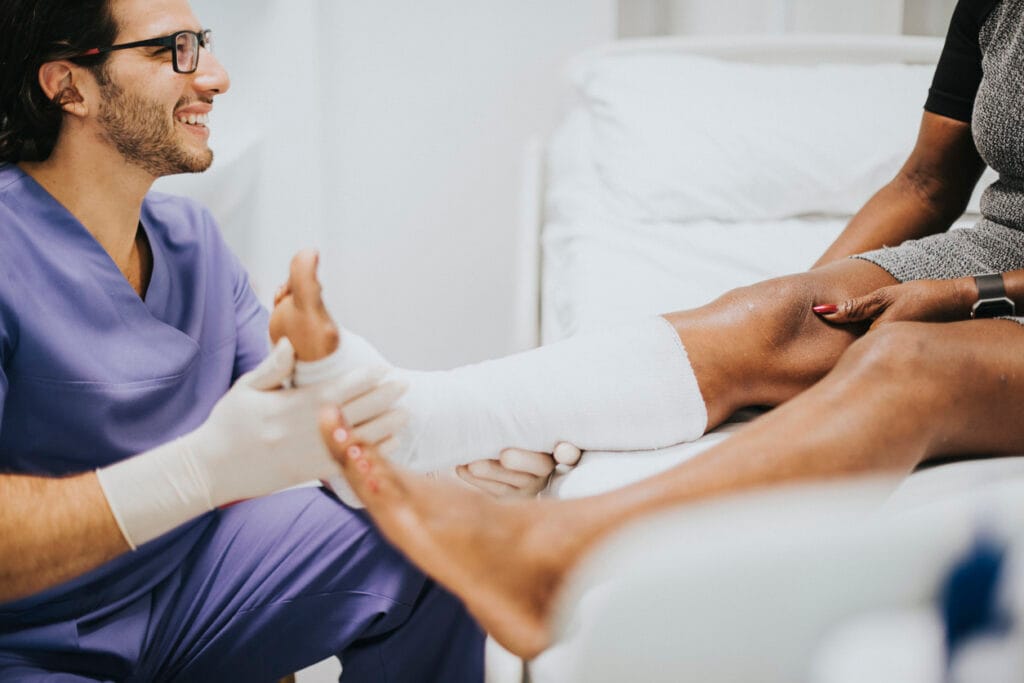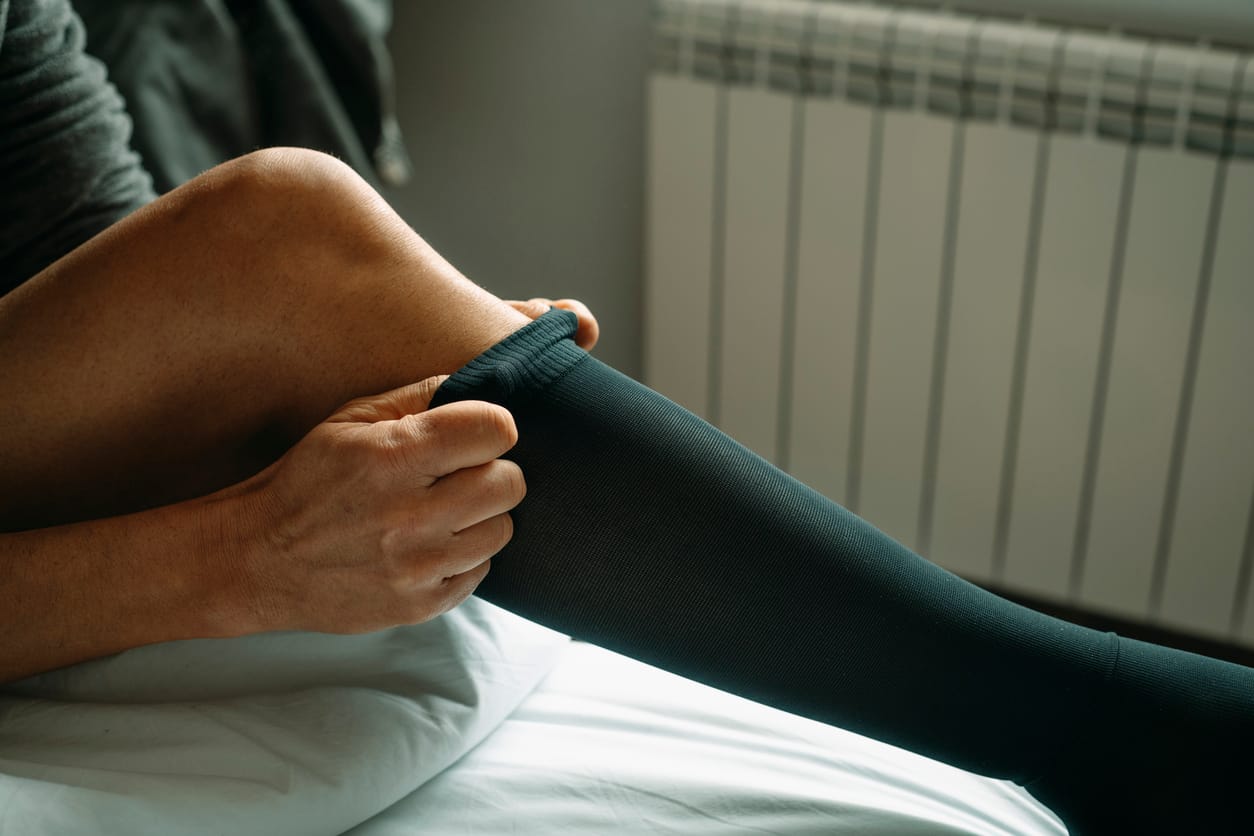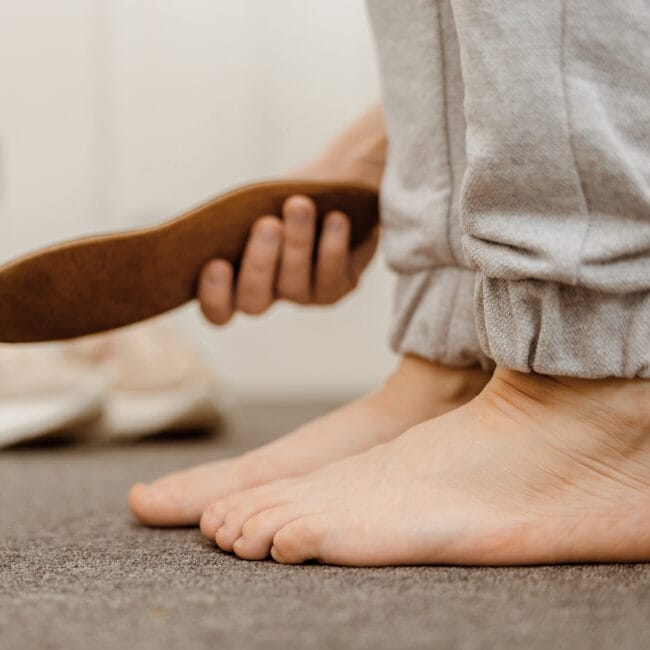Compression stockings, also known as compression socks, are specially made socks that fit tighter than normal so they gently squeeze your legs. Wearing them helps improve your blood flow and reduces pain and swelling in your legs. They come in different lengths and tightness, and you can get compression sleeves, which don’t have feet.

When/who should wear compression socks?
Although you might see your favorite athlete wearing them. Compression stockings are not suitable for everyone. Your GP or Podiatrist will check your circulation.
However, individuals with the following problems benefit from wearing them if they are:
- Are at risk for circulation problems, like CVI, DVT, or diabetes. Chronic venous insufficiency (CVI): This condition, caused by damage in the veins in the legs, can lead to ulcers and serious swelling in the legs, spider veins, and skin color changes. There is high-quality evidence that compression stockings can help heal ulcers and prevent their recurrence. Deep vein thrombosis (DVT): Compression socks can help with acute edema (swelling) and pain caused by this condition, characterized by one or more blood clots in the legs. Varicose veins: Compression socks can reduce swelling and leg fatigue caused by the condition, which is characterized by bulging, enlarged veins.
- Are recovering from surgery. Compression socks can help with recovery from surgery, especially if an operation is done on the leg, knee, or hip, where there will be swelling.
- Have, or are at risk for, lymphedema (a buildup of fluid usually drained by your lymphatic system). Compression socks can help reduce swelling and prevent attacks of cellulitis (a bacterial skin infection) for people with this condition.
- Those that are bedridden or have a hard time moving your legs, sit or stand all day at work or, if you play sports, pregnant individuals and spend long stretches of time on airplanes etc.
Tips for First-Time Compression Stocking Users
- You usually need to wear stockings from morning to bedtime. Wear the stockings first thing in the morning when your legs are less likely to be swollen.
- Roll the stockings inside out to the ankle. Slip your feet in and slowly roll them up your legs and smooth out the fabric to avoid snags.
- Try wearing rubber gloves while you put on your stockings so you can get a better grip on them.
- Don’t wear any jewelry that could tear or snag your compression socks when you’re putting them on.
- Avoid applying lotion or oils right before you wear stockings. Moisture makes it harder to pull stockings on.
- Wash new stockings in mild soap before you wear them. It makes the fabric pliable and easier to wear.
- If you can, buy more than one pair so you have a clean pair while one is dirty.
- Keep an eye out for sore marks on your legs, as well as blisters and discoloration.
Side Effects of Wearing Compression Stockings
Compression stockings can have some side effects, especially if you’re not wearing them correctly or you’re wearing the wrong size. The most common side effects include:
- Skin irritation, such as itchiness or feeling cold or warm
- Redness
- Pain or discomfort
Rare side effects include:
- Allergic reaction to the stocking material
- Bacterial or fungal infection
- Soft tissue damage















